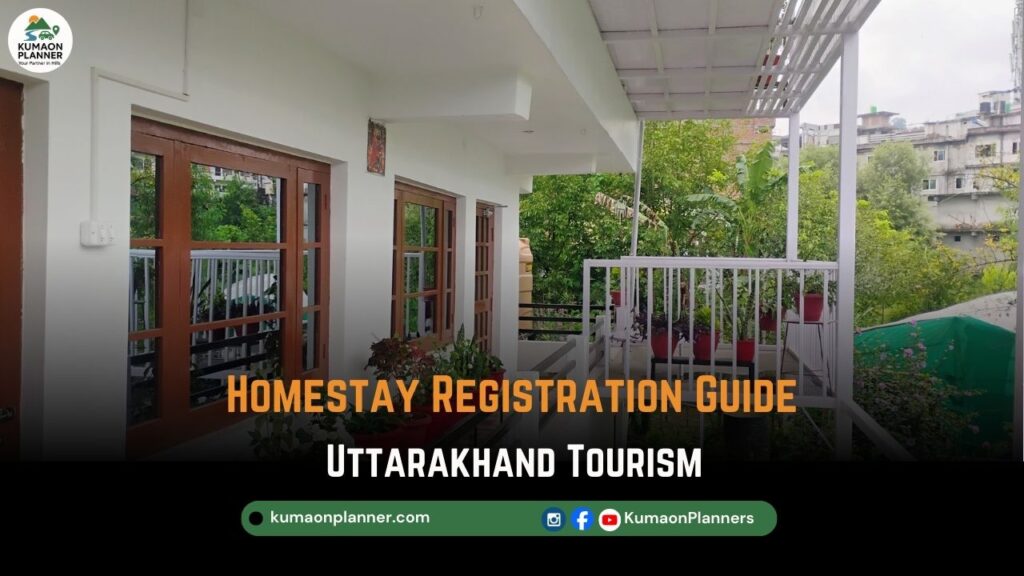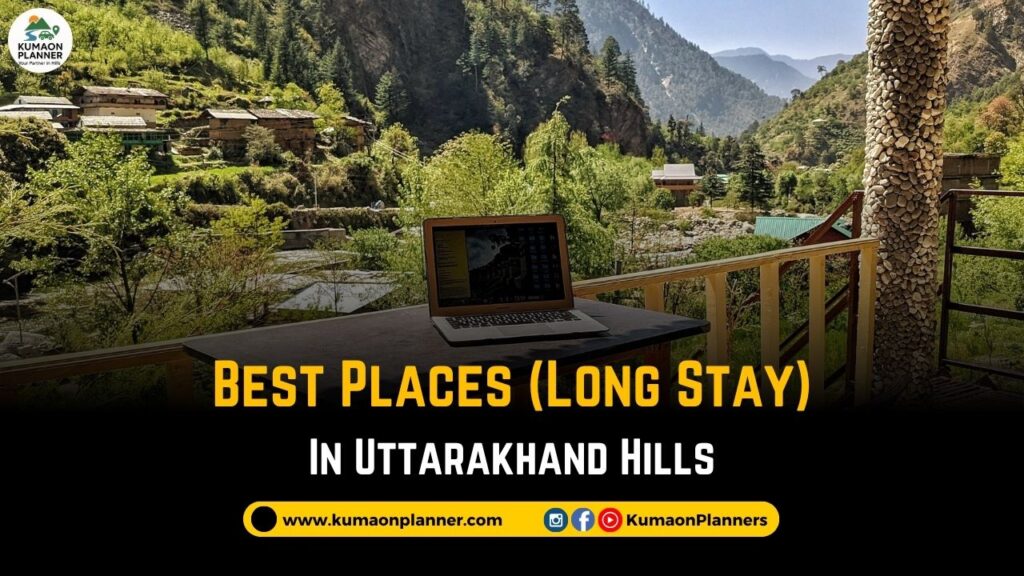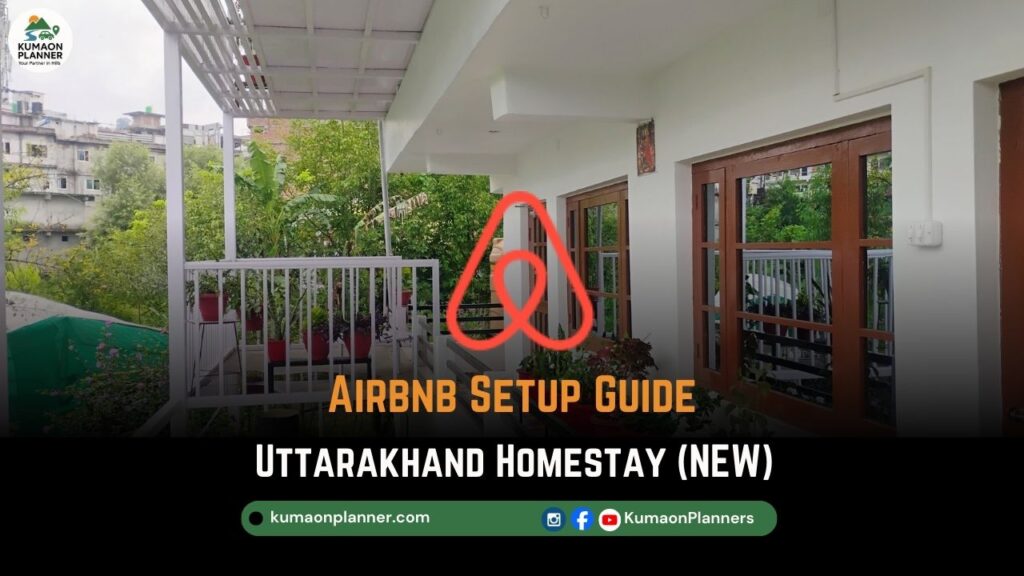Starting a homestay in Uttarakhand is one of the most rewarding things you can do — not just financially, but culturally too. Tourists today don’t want generic hotels; they want real mountain experiences, peaceful stays, local stories, and a sense of belonging.
But… a homestay business is not just about preparing a guest room and putting a board outside. There are government guidelines, registration steps, approvals, safety norms, and proper operational planning involved — especially in Uttarakhand’s sensitive hill ecology.
This guide breaks down the entire process in a simple, step-by-step way so you can start your homestay confidently, legally, and profitably.
1. What Is a Homestay? (And How It Differs From Guest Houses)
Before you begin, it’s important to understand the official definition.
A homestay means:
You host guests inside your own home — either a room, a floor, cottage, or a dedicated portion of your residential property.
You must be living on the same premises (main house or same compound).
Homestay vs Guest House
| Feature | Homestay | Guest House |
|---|---|---|
| Owner lives on property | Yes | Not required |
| Licensing | Simplified homestay registration | Full commercial lodging license |
| Maximum rooms | Usually 1–6 rooms (varies by guidelines) | No fixed limit |
| Experience | Cultural + family-based | Commercial stay |
| Taxation | Lower compliance | Higher compliance |
If you are planning 1–6 rooms, personalised hospitality, and want easier approvals — homestay is the best option.
2. Why Uttarakhand Is Perfect for Homestays
Uttarakhand’s tourism has shifted from “hill station sightseeing” to “slow travel.”
This means:
- Long stays (6–20 days)
- Work-from-mountains community
- Spiritual + culture travellers
- Wellness tourism
- Experiential tourism
- Birding / forest lovers
Homestays fit perfectly into this trend because travellers want:
✔ Local Kumaoni/Garhwali food
✔ Village lifestyle
✔ Nature proximity
✔ Peaceful locations
✔ Authentic, non-hotel vibe
So the demand for homestays is at an all-time high — especially in places like Nainital, Ranikhet, Mukteshwar, Jageshwar, Almora, Bhimtal, Lansdowne, and Chakrata.
3. Uttarakhand Tourism Homestay Scheme (2025 Overview)
The government actively promotes homestays to create local employment and decentralize tourism.
Key benefits of registering under the scheme:
- Govt-approved homestay certificate
- Easy visibility during tourism campaigns
- Eligibility for subsidies/loans
- Local district support
- Lower compliance vs commercial hotels
- Trust factor for travellers
Eligibility
- The owner must be living on the property.
- The house must be in Uttarakhand (rural or urban).
- 1–6 guest rooms allowed (depends on district rules).
- Rooms should meet basic size + sanitation + safety norms.
Here is a Guide in Hindi – उत्तराखंड में होमस्टे शुरू कैसे करें?
4. Documents Required for Homestay Registration
You’ll need:
- Aadhaar card of owner
- Ownership documents (registry, sale deed, patta, etc.)
- Property tax receipt / electricity bill
- Two passport-size photos
- House layout plan (simple sketch is enough in many districts)
- NOC from local Panchayat/Municipality
- Fire safety declaration
- Identity proof of co-owner (if any)
- Photographs of rooms and washrooms
Note: Requirements may vary slightly district-to-district.
5. Step-by-Step Registration Process (Uttarakhand Homestay)
Step 1: Prepare Your Documents
Ensure your ownership papers and ID proofs are ready.
If ownership is joint, consent letter from all owners may be needed.
Step 2: Apply Through Local Tourism Office
Go to the District Tourism Office (DTO) or official online portal (if available).
Submit your form + documents + property photographs.
Step 3: Property Inspection
A small committee (tourism officer + local authority) may visit to verify:
- Rooms
- Toilets
- Cleanliness
- Safety items
- Owner’s presence
Inspection is usually friendly and basic.
Step 4: Approval + Registration Certificate
Within 15–30 days (varies), you get:
- Official Homestay Approval
- Registration Certificate
- Validity (typically 5 years)
Step 5: Police Verification
Required for safety.
Simple process at local police station.
Step 6: Yearly Renewal (Self-Declaration)
Most districts require a simple renewal or self-declaration.
6. Required Approvals & Safety Norms
1. Fire Safety Declaration
Small homestays (up to 6 rooms) usually need:
- Fire extinguisher
- Emergency exit clarity
- Safety declaration form
No heavy NOC like hotels.
2. Panchayat / Municipal NOC
Your local body confirms:
- House is in residential zone
- No objection from neighbours
3. Food Safety (If Serving Meals Commercially)
If you provide home-cooked meals, usually no license needed.
If you run a commercial kitchen, consider FSSAI basic registration (Rs 100/year).
4. Environmental Concerns
If near forest land or eco-sensitive zone:
- Follow noise rules
- Limit concrete expansion
- Preserve trees
- Use septic tanks properly
This matters because hill regions are eco-sensitive.
7. Preparing Your Homestay for Guests (Interior + Comfort)
A good homestay is not expensive — it is thoughtful.
1. Room Requirements
- Comfortable bed + blankets
- Clean linens
- Hot water
- Power backup if possible
- Good lighting
- Charging points
- Wi-Fi (very important for long stays)
2. Washroom Requirements
- Western toilet
- Geyser
- Clean tiles
- Bucket + mug
- Exhaust fan
3. Common Areas
Guests love:
- Balcony views
- Sit-out area
- Small library
- Indoor plants
- Bonfire area (safe zone)
4. Local Touch
Add:
- Local art
- Kumaoni/Garhwali décor
- Copper utensils
- Woolen furnishings
- Handwoven curtains
This makes the stay memorable and photo-friendly.
8. Pricing Your Homestay
Don’t guess — structure it with logic:
Factors to consider:
- Location demand
- Season (summer/winter)
- Room size
- Breakfast included?
- View quality
- Internet speed
- Parking availability
- Additional services
Benchmark prices in Uttarakhand
- Basic room: ₹1200–1800
- Mid-range room: ₹2000–3500
- Premium room: ₹4000–8000
9. How to List Your Homestay Online
Once registered, list on:
- Airbnb
- Booking.com
- MakeMyTrip
- Google Travel
- Facebook & Instagram
- Your website (best for commission-free repeat bookings)
Key things to optimise:
- Professional photos
- Clear house rules
- Accurate map location
- Amenities list
- Cancellation policy
- Special highlights (view, silence, wifi, sunrise etc.)
10. Operations & Daily Management
A homestay succeeds when operations are smooth.
Daily Tasks
- Clean rooms
- Change linens
- Prepare breakfast
- Keep water ready
- Handle guest queries
- Ensure hot water supply
Weekly Tasks
- Deep-clean washrooms
- Change blankets (if long stay)
- Check geyser/generator
- Stock groceries
Monthly Tasks
- Plumbing check
- Electrical check
- Pest control
- Online listing updates
11. Financial Planning
Apart from room revenue, plan additional earners:
- Meals (₹300–600 per person)
- Guided walks
- Bonfire (₹300–500)
- Pickup-drop
- Local experiences (village tour, fruit orchard visit)
Many homestays earn more from experiences than rooms.
12. Managing Reviews & Guest Expectations
Great reviews = more bookings = higher pricing.
Do these:
- Greet guests warmly
- Fix issues immediately
- Provide local tips
- Keep breakfast fresh
- Add a personal touch
Avoid these:
- Overpromising
- Fake amenities
- Hidden charges
- Late replies
13. Common Mistakes to Avoid
- No Wi-Fi
- Bad lighting in rooms
- Not cleaning before check-in
- Poor photos online
- No clear house rules
- Letting guests stay without ID proof (big mistake)
14. Long-Term Sustainability Planning
Uttarakhand’s hills are fragile.
Plan operations that protect nature:
- Avoid loud music
- Use solar water heater
- Segregate waste
- Reduce plastic bottles
- Encourage long stays
- Support local farmers + artisans
Guests love eco-friendly stays — and it helps your brand long term.
Starting a homestay in Uttarakhand is not complicated — but doing it properly takes planning.
Once your registration, setup, and operations are streamlined, the business becomes:
✔ Sustainable
✔ Highly profitable
✔ Emotionally rewarding
✔ Community-building
And if you want support with setup, listing, or property management — Kumaon Planner is always here to help you build a trusted, long-term mountain stay.
Quick Connect Here
For any other query, go to the Contact us page.
FAQs
1. How many rooms are allowed in a homestay in Uttarakhand?
Usually 1–6 rooms are permitted under the homestay scheme. Exact limits may vary by district guidelines.
Yes. Homestays require the owner to stay on the same premises or within the same compound.
No. Homestays follow a simplified registration process, not hotel-style commercial licensing.
If you serve simple home-cooked meals, usually no. But commercial kitchens should get a basic FSSAI license.
Typically 15–30 days depending on district.
Yes, and registered homestays often rank better due to trust factors.
Not mandatory, but highly recommended — especially Wi-Fi for long-stay guests and digital nomads.



